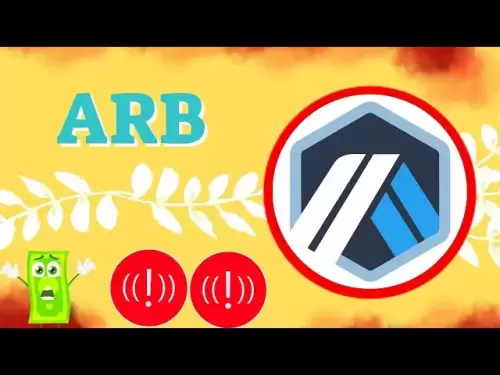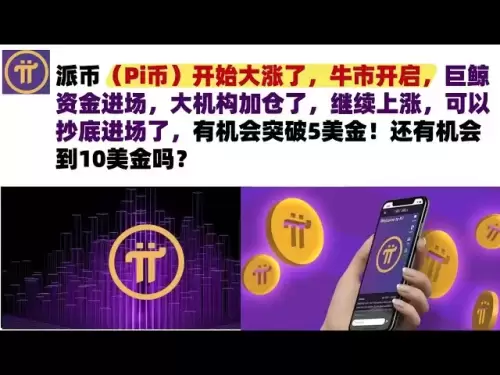-
 Bitcoin
Bitcoin $116800
0.71% -
 Ethereum
Ethereum $4211
6.94% -
 XRP
XRP $3.276
1.68% -
 Tether USDt
Tether USDt $1.000
0.02% -
 BNB
BNB $807.0
3.00% -
 Solana
Solana $180.5
3.24% -
 USDC
USDC $0.9999
0.01% -
 Dogecoin
Dogecoin $0.2406
9.02% -
 TRON
TRON $0.3357
-1.10% -
 Cardano
Cardano $0.8047
3.16% -
 Hyperliquid
Hyperliquid $43.81
7.97% -
 Chainlink
Chainlink $21.08
10.16% -
 Stellar
Stellar $0.4506
1.97% -
 Sui
Sui $3.916
4.69% -
 Bitcoin Cash
Bitcoin Cash $568.3
-1.85% -
 Hedera
Hedera $0.2628
2.48% -
 Avalanche
Avalanche $24.17
4.54% -
 Ethena USDe
Ethena USDe $1.001
0.03% -
 Litecoin
Litecoin $121.4
0.35% -
 Toncoin
Toncoin $3.408
2.28% -
 UNUS SED LEO
UNUS SED LEO $8.978
-0.08% -
 Shiba Inu
Shiba Inu $0.00001376
7.59% -
 Uniswap
Uniswap $10.86
2.94% -
 Polkadot
Polkadot $4.079
5.33% -
 Dai
Dai $1.000
0.02% -
 Pepe
Pepe $0.00001231
10.28% -
 Bitget Token
Bitget Token $4.502
0.79% -
 Cronos
Cronos $0.1576
3.63% -
 Monero
Monero $271.1
0.48% -
 Ethena
Ethena $0.7336
18.38%
How is the return on staking calculated?
Staking returns vary greatly, influenced by network inflation, total staked amount, validator fees, and network stability. Understanding these factors and associated risks is crucial before participating.
Mar 06, 2025 at 10:48 pm
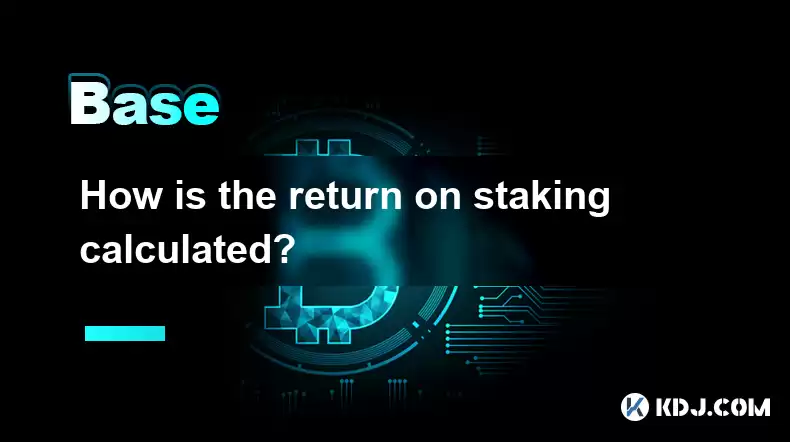
Key Points:
- Return on staking (RoS) is not a fixed number; it varies based on several factors.
- The primary factor affecting RoS is the network's inflation rate and the total amount staked.
- Validator commission fees also influence your individual RoS.
- Network congestion and downtime can impact your potential returns.
- Understanding the risks associated with staking is crucial before participation.
How is the Return on Staking Calculated?
Calculating the return on staking (RoS) isn't a straightforward equation like calculating simple interest. It's a dynamic process influenced by several interacting variables within the specific blockchain's ecosystem. The core principle involves earning rewards for securing the network by locking up your cryptocurrency. However, the precise amount earned varies considerably.
One crucial factor influencing RoS is the network's inflation rate. Many proof-of-stake (PoS) blockchains release new coins as rewards for validators. The higher the inflation rate, the more coins are added to the total supply, potentially increasing the rewards for stakers. However, a high inflation rate can also dilute the value of existing coins. This is a complex balancing act within the economic design of the blockchain.
Another key factor is the total amount of cryptocurrency staked. If a large percentage of the total coin supply is already staked, the rewards per staked coin will be lower. This is because the total reward pool is divided among a larger number of participants. Conversely, if fewer coins are staked, the rewards per coin are higher. This dynamic reflects the basic principles of supply and demand within the staking market.
The commission fees charged by validators significantly impact your individual RoS. Validators, who are responsible for verifying and adding new blocks to the blockchain, often take a commission from the rewards they earn. This commission is deducted from your rewards, directly reducing your RoS. Therefore, selecting a validator with a reasonable commission is vital for maximizing your returns.
Network conditions play a significant role. High network congestion can lead to delays in block production, which in turn might affect the frequency of reward payouts. Conversely, network downtime or unexpected issues could temporarily halt rewards or even lead to losses depending on the specifics of the network and the staking provider.
Technical expertise can also influence your RoS. Some staking solutions offer more advanced features, potentially leading to higher rewards. This can include using multiple validators to diversify risk or employing strategies to optimize reward accrual. However, this often requires a higher level of technical understanding and might involve additional complexity.
Finally, the choice of the staking provider also impacts your return. Centralized staking services often offer convenience and ease of use, but may charge higher fees than self-staking. Self-staking allows for more control but requires more technical knowledge and carries a higher risk of losing your stake due to operational errors. This decision depends on your risk tolerance and technical expertise.
Understanding the Different Staking Methods
There are several ways to stake your cryptocurrencies, each with its own implications on your RoS.
- Delegated Staking: You delegate your cryptocurrency to a validator, who stakes it on your behalf. This method is generally easier and less technically demanding. Your RoS will depend on the validator's commission and efficiency.
- Self-Staking: You run your own validator node, staking your cryptocurrency directly. This offers greater control but requires more technical knowledge and setup. Your RoS will be influenced by your validator’s efficiency and commission (if any).
- Staking Pools: You combine your cryptocurrency with others to form a staking pool, increasing your chances of validating blocks and earning rewards. Your RoS will be shared among the pool members, usually according to the amount staked.
- Liquid Staking: This allows you to stake your cryptocurrency and still maintain liquidity, meaning you can use your staked assets in other DeFi applications. The RoS will be impacted by the liquid staking protocol's fees and the overall market conditions.
Frequently Asked Questions:
Q: Is staking risk-free?
A: No, staking carries inherent risks. Network issues, validator failures, or even changes in the blockchain's protocol can impact your returns or lead to losses.
Q: How often are staking rewards paid?
A: The frequency of reward payouts varies depending on the specific blockchain and the staking method. Some networks pay out rewards daily, while others do so weekly or monthly.
Q: What are the tax implications of staking rewards?
A: Staking rewards are generally considered taxable income in most jurisdictions. The specific tax treatment can vary depending on your location and the type of cryptocurrency staked. Consult with a tax professional for accurate advice.
Q: Can I unstake my cryptocurrency at any time?
A: The unstaking period varies greatly among blockchains. Some allow for immediate unstaking, while others impose a lock-up period of several days or even weeks. Check the specific rules of the network you're staking on.
Q: How do I choose a validator?
A: Choose a validator with a strong reputation, high uptime, low commission fees, and a proven track record of successful block validation. Research and due diligence are essential.
Q: What are the minimum requirements for staking?
A: The minimum amount of cryptocurrency required for staking varies depending on the blockchain and staking method. Some networks have high minimums, while others have lower thresholds. Check the specific network's requirements before staking.
Disclaimer:info@kdj.com
The information provided is not trading advice. kdj.com does not assume any responsibility for any investments made based on the information provided in this article. Cryptocurrencies are highly volatile and it is highly recommended that you invest with caution after thorough research!
If you believe that the content used on this website infringes your copyright, please contact us immediately (info@kdj.com) and we will delete it promptly.
- AI Coin Mania: Dubai Millionaires Eye 20x Gains!
- 2025-08-09 23:10:12
- ChatGPT's Hot Takes: Meme Coins to Buy Now for a Wild 2025!
- 2025-08-09 23:10:12
- Jurassic Park Vibes in Your Pocket: The Colourful Canadian Coin Featuring a Dinosaur Eye
- 2025-08-09 23:50:12
- Altcoins on the Radar: VeChain, Ethereum, and the Shifting Crypto Landscape
- 2025-08-09 23:50:12
- Crypto Airdrops & Opportunities: What's Hot in August 2025
- 2025-08-09 22:30:12
- XRP, Cardano, and the Alluring Alternatives: A 2025 Crypto Landscape
- 2025-08-09 22:35:12
Related knowledge

What happens if I forget my crypto wallet password?
Aug 09,2025 at 08:50am
Understanding the Role of a Crypto Wallet PasswordA crypto wallet password serves as a critical security layer that protects access to your digital as...

Can you reuse a crypto wallet address?
Aug 08,2025 at 03:49pm
Understanding Wallet Addresses in CryptocurrencyA crypto wallet address is a unique identifier used to send and receive digital assets on a blockchain...
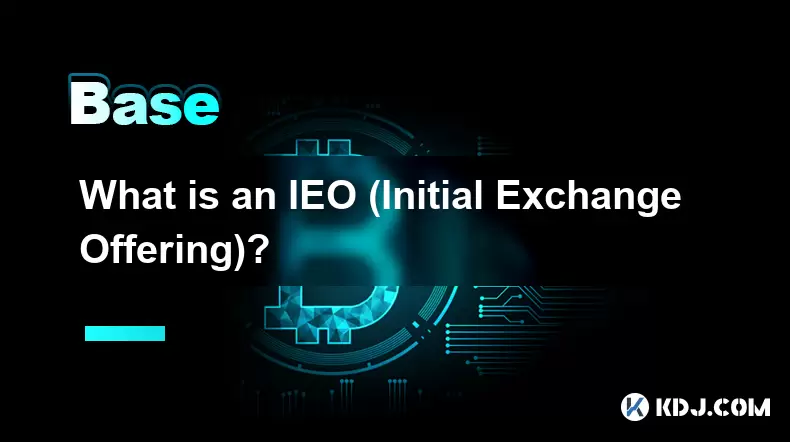
What is an IEO (Initial Exchange Offering)?
Aug 09,2025 at 06:22am
Understanding the Concept of IEO (Initial Exchange Offering)An Initial Exchange Offering (IEO) is a fundraising method used by blockchain-based projec...
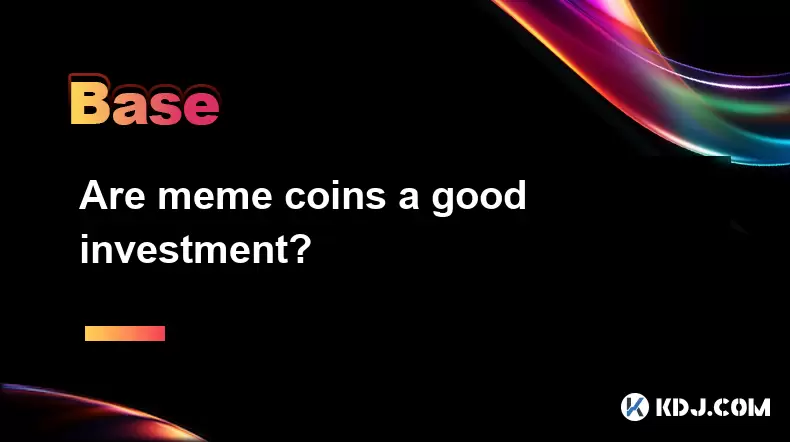
Are meme coins a good investment?
Aug 08,2025 at 11:36pm
Understanding Meme Coins and Their OriginsMeme coins are a category of cryptocurrencies that originated from internet humor or viral trends rather tha...
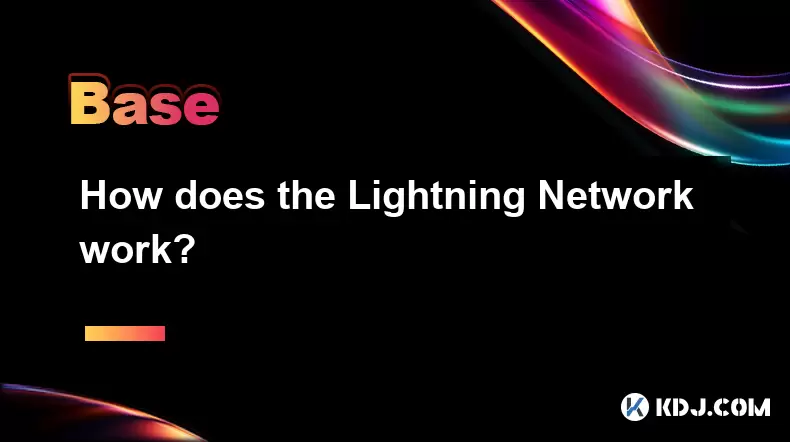
How does the Lightning Network work?
Aug 09,2025 at 07:15pm
What Is the Lightning Network?The Lightning Network is a second-layer scaling solution built on top of blockchain networks, primarily Bitcoin, designe...
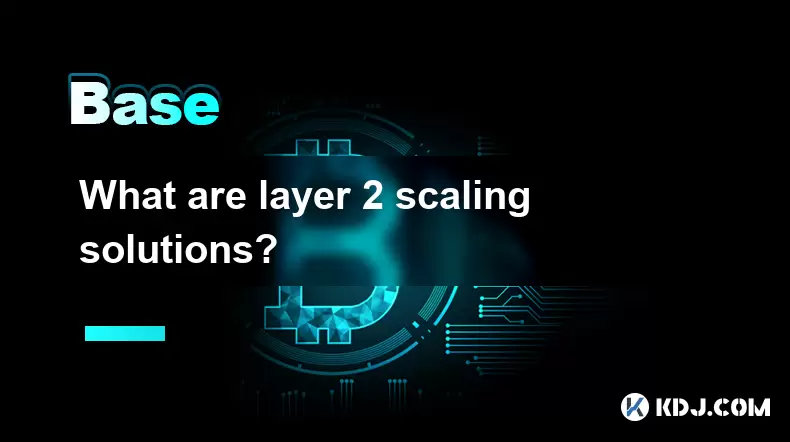
What are layer 2 scaling solutions?
Aug 09,2025 at 04:07am
Understanding Layer 2 Scaling Solutions in CryptocurrencyIn the world of blockchain and cryptocurrencies, scalability has long been a pressing challen...

What happens if I forget my crypto wallet password?
Aug 09,2025 at 08:50am
Understanding the Role of a Crypto Wallet PasswordA crypto wallet password serves as a critical security layer that protects access to your digital as...

Can you reuse a crypto wallet address?
Aug 08,2025 at 03:49pm
Understanding Wallet Addresses in CryptocurrencyA crypto wallet address is a unique identifier used to send and receive digital assets on a blockchain...

What is an IEO (Initial Exchange Offering)?
Aug 09,2025 at 06:22am
Understanding the Concept of IEO (Initial Exchange Offering)An Initial Exchange Offering (IEO) is a fundraising method used by blockchain-based projec...

Are meme coins a good investment?
Aug 08,2025 at 11:36pm
Understanding Meme Coins and Their OriginsMeme coins are a category of cryptocurrencies that originated from internet humor or viral trends rather tha...

How does the Lightning Network work?
Aug 09,2025 at 07:15pm
What Is the Lightning Network?The Lightning Network is a second-layer scaling solution built on top of blockchain networks, primarily Bitcoin, designe...

What are layer 2 scaling solutions?
Aug 09,2025 at 04:07am
Understanding Layer 2 Scaling Solutions in CryptocurrencyIn the world of blockchain and cryptocurrencies, scalability has long been a pressing challen...
See all articles





















